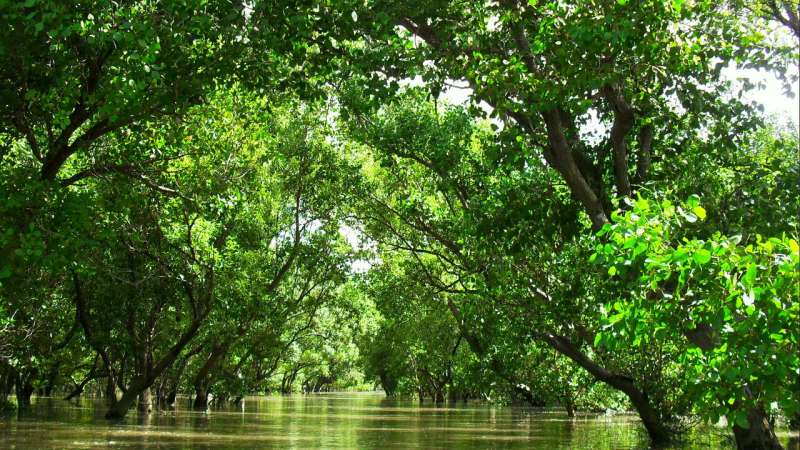Mangrove patches deserve greater recognition no matter the size

Governments must provide stronger protection for crucial small mangrove patches, is the call led by scientists at international conservation charity ZSL (Zoological Society of London), which hosts the IUCN SSC Mangrove Specialist Group, in a letter published in Science today.
With nearly 35% of mangroves lost from around the world since the 1980s, primarily due to coastal development, the future loss of seemingly small mangrove patches to new construction projects such as airports or aquaculture is extremely worrying for coastal communities and Critically Endangered wildlife like the pygmy three-toed sloth (Bradypus pygmaeus) and green sawfish (Pristis zijsron) that are protected by, and reliant on, these habitats.
Large swathes of mangroves in Southeast Asia, such as in the Philippines, have been cleared to make way for aquaculture, mainly shrimp and fish ponds. Elsewhere, in the Maldives, mangroves are being cleared to make way for a controversial new airport to be built. Here, despite assurances being made that only 30% of mangroves would be directly affected as a result, almost 70% may have already been destroyed.
Mangroves offer vital ecosystem services to local communities, providing food, coastal protection from extreme weather events, fisheries support and key natural carbon storage facilities. They clean water by trapping sediments and pollutants and help mitigate the impacts of storm surges and tsunamis on coastal communities, particularly in vulnerable low-lying island nations.

Despite warnings from leading scientists about the dire ramifications of losing mangroves, the conversion and degradation of mangrove forests for infrastructure or agriculture still occur—especially for smaller mangrove patches.
The letter states that the continued loss of small patches of mangroves could result in the disconnect of habitats, meaning natural wildlife corridors used by species to move freely throughout the landscape could be lost. This could generate new barriers for wildlife being able to adapt to the effects of climate change, as well as low-lying island communities becoming increasingly vulnerable to extreme weather patterns such as typhoons during monsoon seasons.
Dr. David Curnick, Post-doctoral Researcher at ZSL's Institute of Zoology and member of the IUCN SSC Mangrove Specialist Group said: "Given the recent Intergovernmental Panel on Climate Change's projections, we simply cannot afford to lose more mangrove forests, irrespective of their size.
"All too often mangroves are regarded as irrelevant swamps or wastelands—yet they're incredibly important ecosystems. Globally, yes, mangrove conservation is being looked at, but it's these smaller patches of mangroves in remote areas that need greater recognition.

"We need governments to move away from policy decisions that prioritise large areas and short-term local political gains, and instead adopt a more well-rounded long-term vision, ensuring the value of smaller mangrove patches are appreciated and safeguarded."
Though Mangroves are covered under international agreements including the Convention on Biological Diversity (CBD), the United Nations Framework Convention on Climate Change (UNFCCC) and Convention for the Protection of World Cultural and Natural Heritage—these are only recommendations and thus mangrove forests are still one of the most severely threatened and undervalued ecosystems on Earth.
The ecosystem services provided by mangroves are conservatively estimated at around £1.2 billion (US $1.6 billion) globally, suggesting that no matter their size, they are key to meeting commitments like the Paris Climate Agreement.
More information: Jennifer Sills et al, The value of small mangrove patches, Science (2019). DOI: 10.1126/science.aaw0809
Journal information: Science
Provided by Zoological Society of London





















